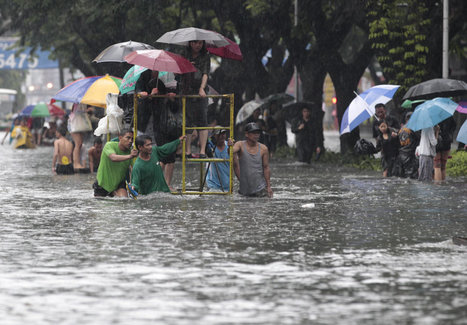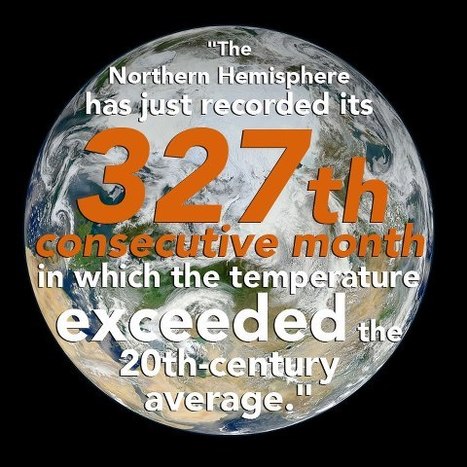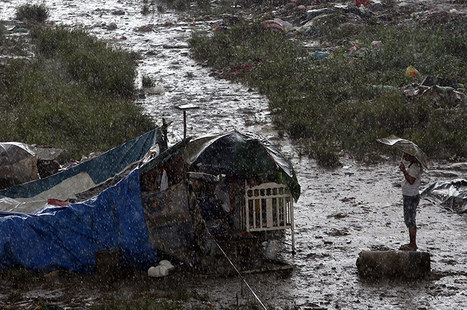"Flooding caused by some of the Philippines' heaviest rains on record submerged more than half the capital Tuesday, turning roads into rivers and trapping tens of thousands of people in homes and shelters. The government suspended all work except rescues and disaster response for a second day."
Get Started for FREE
Sign up with Facebook Sign up with X
I don't have a Facebook or a X account
 Your new post is loading... Your new post is loading...
 Your new post is loading... Your new post is loading...

Paige McClatchy's curator insight,
December 14, 2013 4:55 PM
The "socio-economics of flooding" is a side of the natural disaster we don't normally think about. People most affected by floods tend to live in areas with poor infrastructure and large populations. Their displacement to cities, like Dhaka, has incredible cost. For both the family and the new place they relocate to. |
Marissa Roy's curator insight,
December 11, 2013 8:19 AM
Pictures truly are worth a thousand words. Seeing the disaster occur in someone home, or seeing how a locasl business has lost so much due to the disaster is powerful. It is one thing to read an article and it is another to see precious photos ruined by the disaster. 
Jess Deady's curator insight,
May 4, 2014 9:57 PM
Flooding causes serious damage both emotionally and physically. People lose everything when floods happen. Their homes, cars and lives literally get lost in the water. Tragedy like this happens more often than we think. Being prepared for when something like this strikes is the key.
tyrone perry's curator insight,
May 1, 2018 8:37 PM
The flooding in the Manila caused widespread displacement and loss. Many flood victims have resorted to go to temporary evacuation centers provided by the red cross to seek shelter and food. People of Manila are have been forced to figure out how to work thru this crises because there is a limited amount of emergency workers. floods destroyed home, businesses, and the environment across Manila. kids are being quarantined at a designated hospital with dengue fever. Manila has a long road for clean up and recovery.
Carly Griffiths's curator insight,
May 17, 2016 1:04 AM
I absolutely loved watching these videos. I believe they would be a fantastic resource to show students or for students to use for research when exploring natural disasters. This site provides multiple videos on multiple different disasters. Each video provides great information and facts including, causes, when and where they are most likely to happen, the amount of damage, different sizes and speed and past examples. Each video provides such great visuals and explanation for these natural disasters. Students would be able to gain deep knowledge and understandings to support their research and/or investigation. I am currently in the middle of creating a task for my students using digital technologies such as this and incorporating collaboration through Wikis and blog. I plan to use these videos to further my students knowledge and encourage further exploration on these videos for their research. |














The area of Minila received more rainfall in day than it typically gets in a month. Flights were delayed and cancelled, roads were turned into rivers. Some of the thoughts of why this is happening are because of deforestation of mountains, clogged waterways and canals where large squatter communities live, and poor urban planning
Flash flooding is probably the least understood natural disaster in the world. People often underestimate, how dangerous a flash flooding situation can become. The Philippines and South East Asia suffer from widespread monsoons. The regions fertile farmland is a result of the widespread heavy rainfall. A darker consequence of this phenomenon is the occurrence of dangerous flash flooding conditions. This particular rain in the Philippians was strong enough to submerge more than half of the capital underwater. The government in Manila has suspended all government operations that do not pertain to response and rescue missions. There will be major economic effects from this event. The loss of private property, and infrastructure such as roads will put a dent into the local economy.